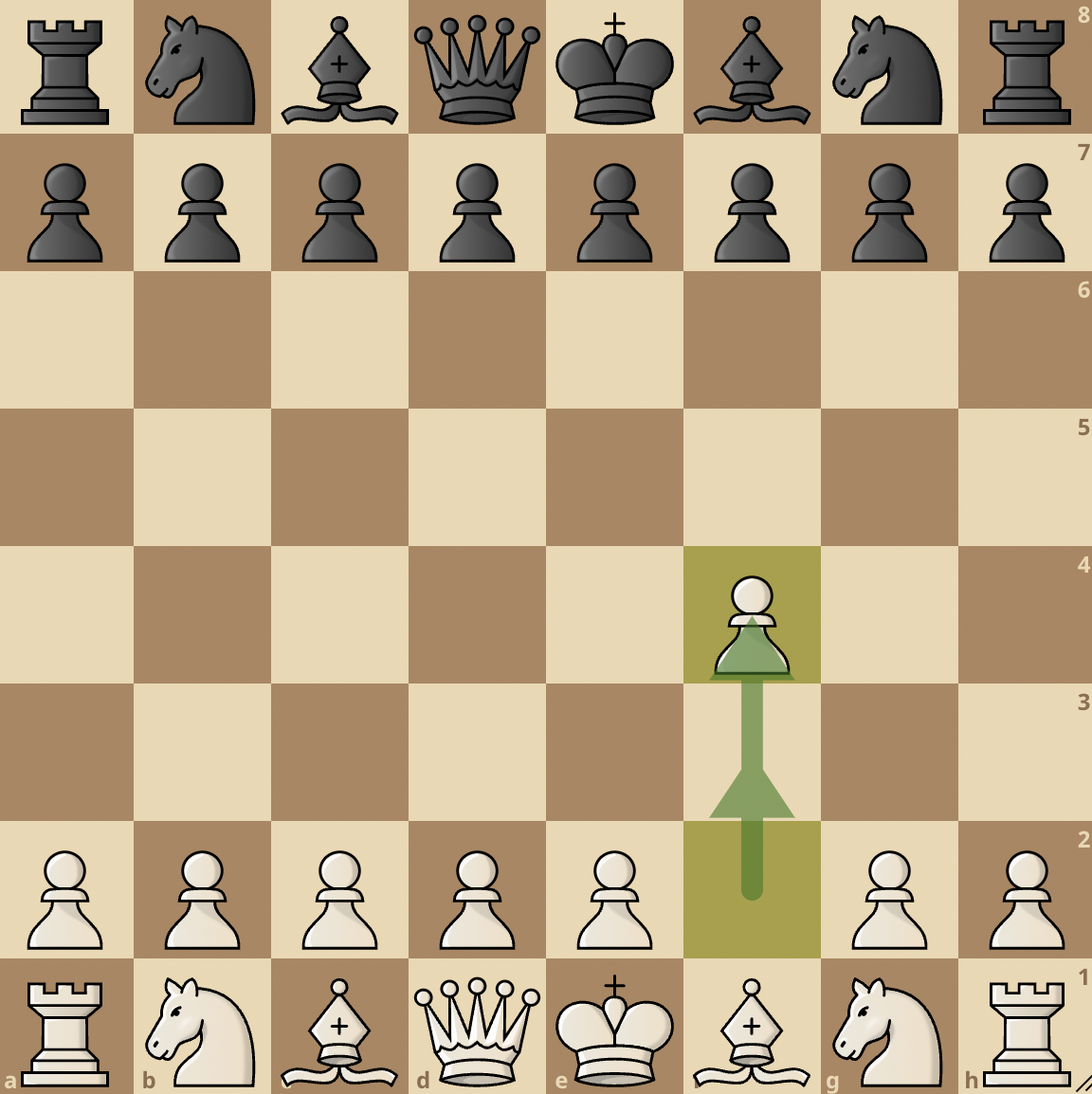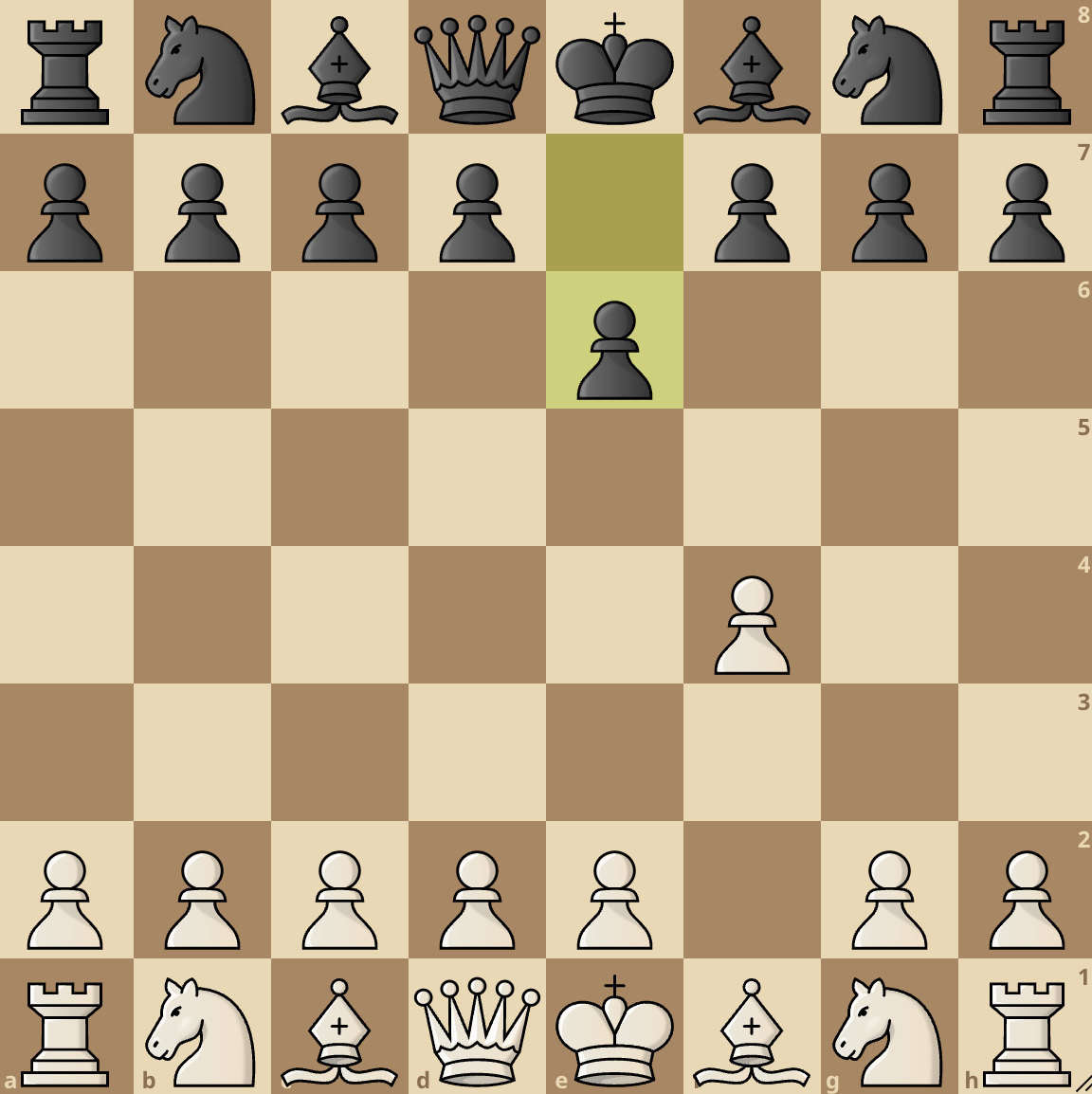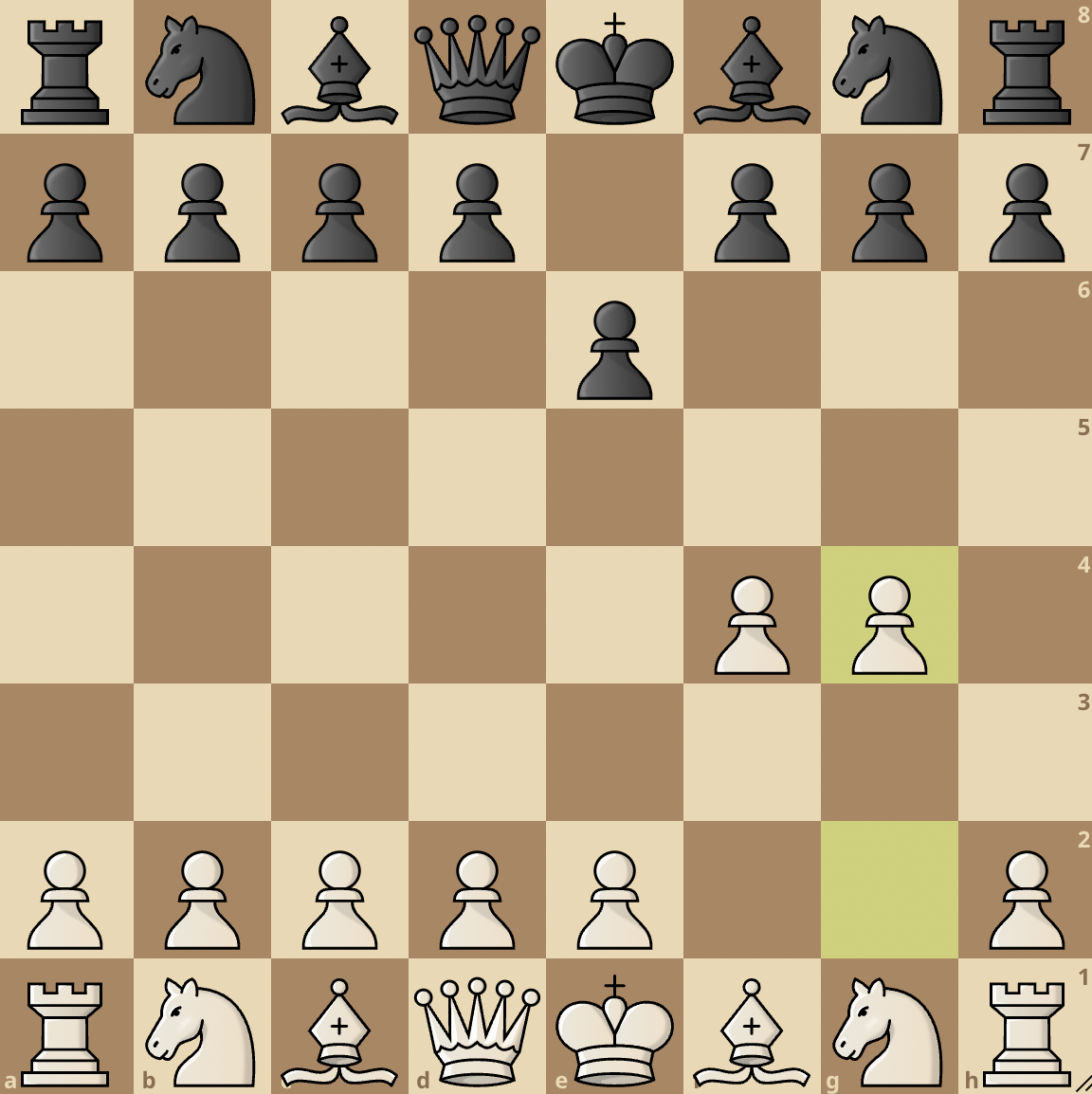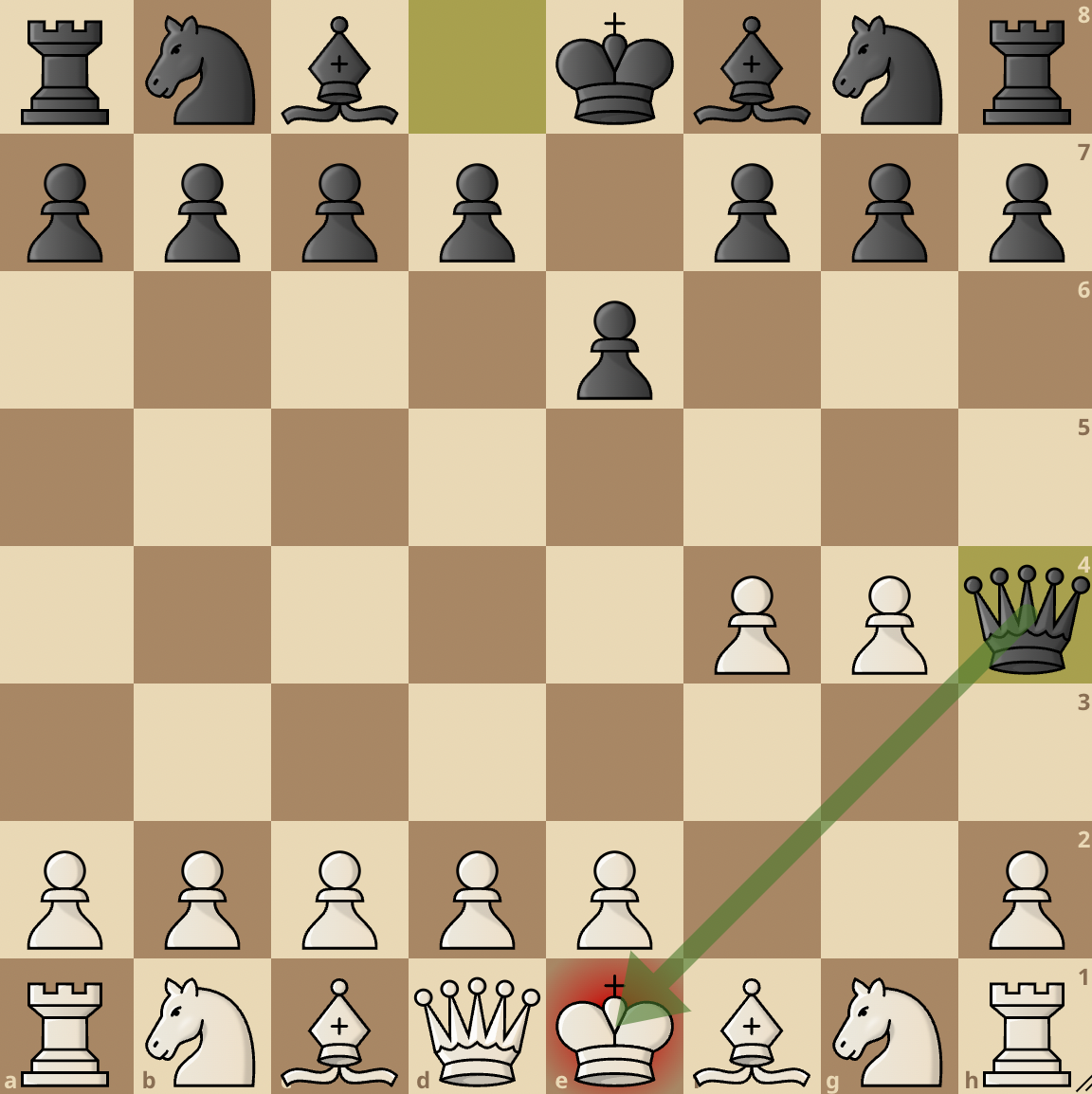The 2 move Checkmate, also called the Fool’s Mate, is a combination of moves in a chess game that allows the player with the black pieces to checkmate the white king in two moves.
Although the 2 move checkmate is the fastest checkmate possible, it relies heavily on the other player making two heavy blunders that do not add any value to the position.
Because of this, the 2 move checkmate is less likely to be found in top-level games.
Chess beginners, however, are very likely to fall for the trap as they do not fully understand the principles of chess and have not entirely grasped the idea of how the game is played.
The 2 move checkmate might also occur in bullet chess (a chess game played with 2 minutes or under on the clock for both players). This is because both players are moving so fast that they have limited time to think about threats and traps.
The odds of you successfully pulling off a 2 move checkmate or Fool’s Mate are incredibly high, and they rely almost entirely on the other player’s inexperience or board blindness.
That said, knowing how to exploit your opponent’s errors is a crucial skill in chess. For example, learning the two move checkmate might come in handy in case you face a player who doesn’t know about it or a player who plays very badly in the opening.
Enough talk. Let’s see this type of checkmate in action.
The Steps That Lead To A 2 Move Checkmate
The steps for performing the 2 move checkmate are:
STEP 1
White moves his pawn on the f square.
The player with the white pieces always starts first in a chess game. The wheels of this checkmate start rolling when White moves his pawn to either f3 or f4.
In doing so, White opens up a direct line of attack on his king.

STEP 2
Black moves the e- pawn to e6.
After White’s f-pawn move, a diagonal line of attack (d8-h4) is opened for Black to exploit.
So playing 1…e6 opens up that diagonal for the Queen and sets the deadly trap.

Another advantage of playing 1….e6 is that it doesn’t “overcommit” so even if your opponent does not play the expected response that leads to the 2 move checkmate, you’ll still have a solid set-up to continue playing your game.
Unlike White, Black doesn’t have to worry about the king’s safety. There are no open files that may expose the king to counter-attacks from White.
STEP 3
White plays the move, pawn to g4.
The moment White plays 2. g4, the final nail is hit on the coffin, and you can start celebrating (silently) as the game is almost over.

Note that 2. g3 won’t work. We’ll explain why in the next section.
STEP 4
Black plays 2… Qh4, and it’s game over.
After your opponent plays g4, you move your Queen to the h4 square, and the game is over – Checkmate!
How is it checkmate? Well, the king has no flight squares to escape to, the queen cannot be captured, and the attack on the king through the h4-e1 diagonal cannot be blocked!

If White played the safer 2. g3, 2…Qh4 won’t be possible as that’ll lose the queen for Black after 3. gxh4. Hope you get this.
And there you have it! The fastest way to win a game of chess.
Study this move order, and you’re sure to win many games against people (particularly newbies) who fall into the trap.
Frequently Asked Questions (FAQs)
Why is the 2-move checkmate sometimes called Fool’s Mate?
The 2-move checkmate is sometimes called Fool’s Mate because it relies on the opposing player making a series of foolish or unwise moves in order to be successful.
Can the 2-move checkmate occur in other variations of chess, such as blitz or bullet chess?
Yes, the 2-move checkmate can occur in any variation of chess, including blitz and bullet chess. It has a higher rate of success in bullet chess since there is very little time for players to analyze and think.
Is the 2-move checkmate considered a legitimate chess strategy?
No, the 2-move checkmate is generally not considered a legitimate or viable chess strategy. It relies on a very specific set of circumstances and responses from the opposing player and is, therefore, not a dependable way to win games.
Additionally, it’s often seen as a cheap way to win and is not respected by serious chess players.
Are there any other quick ways to win a chess game?
Yes, there are many other famous, quick checkmate patterns in chess, including the Scholar’s Mate and the Légal Trap. These checkmate patterns all involve specific sequences of moves that can catch an opponent off-guard and lead to a quick victory.
We recommend you study these related chess materials:
- 40 Checkmate Patterns Sure To Win You Games
- How to Checkmate With Two Rooks? A Beginner Friendly Guide
- Can You Checkmate With Two Knights?
- How To Carry Out The Queen And King Checkmate in Chess
- How To Play The Two Bishop Checkmate
- Learn The Bishop And Knight Checkmate
- Understanding These 12 Chess Tactics Will Make Chess Easy






join the conversation